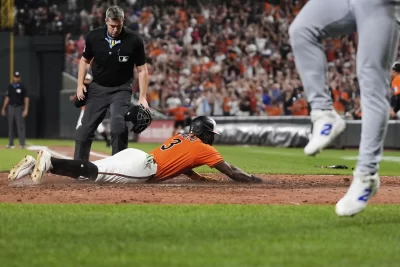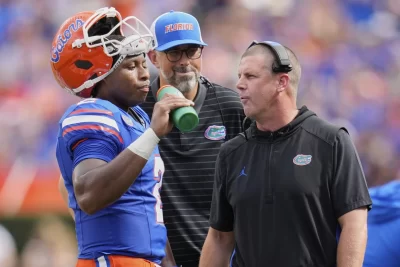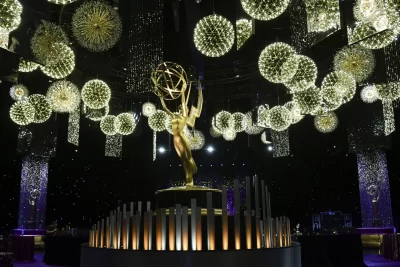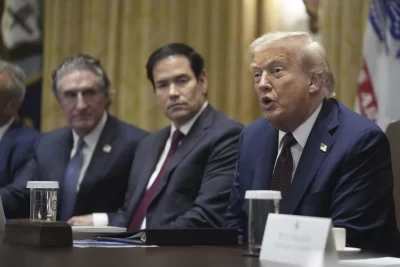
MINNEAPOLIS — Putting women on the same level with men when it comes to swag bags and logos is a starting point, and for Dawn Staley that’s all it is.
South Carolina women’s coach is not certain there will ever be true equity among the men’s and women’s NCAA Tournaments.
“I just don’t know,” Staley told The Associated Press. “I mean, the hotel is nice,” she added sitting at her downtown hotel two blocks from the Target Center, where the Gamecocks will play Louisville on Friday night in the women’s Final Four.
Staley has enjoyed the tournament experience this year — the Gamecocks played two games at home and two games in Greensboro, North Carolina — better than a year ago in the pandemic-caused bubble set up in San Antonio.
After a scathing report issued last summer about numerous inequities between how men’s teams are treated compared with the women, Staley is torn about whether the NCAA can make lasting strides.
Two weeks ago, it was three members of Congress who said the NCAA had taken little more than “short-term steps” toward bridging the gap.
Rep. Carolyn B. Maloney (D-N.Y.), chairwoman of the House Committee on Oversight and Reform; Rep. Jackie Speier (D-Calif.), co-chair of the Democratic Women’s Caucus; and Rep. Mikie Sherrill (D-N.J.) sent a letter to the NCAA the week of the tournament’s start.
On Thursday, the trio introduced the Gender Equity in College Sports Commission act designed to create a 16-person bipartisan panel to study the issue across all NCAA sports.
Speier said in a release the NCAA had made “pathetic progress towards correcting the deeply misogynistic attitudes and treatment of the women’s teams compared to the men’s teams.”
Stanford coach Tara VanDerveer has dealt with inequality issues for all of her 36 years with the program.
“I call it hot dogs for the girls and steak for the boys,” she said. “It will be a great time when you don’t need Title IX, but unfortunately in our world, there’s discrimination still against people, women and we need to keep battling.”
The longtime discussion garnered national attention the past year with critics taking NCAA leadership to task in 2021 after Oregon’s Sedona Prince posted a social media video about the inequities, particularly the weight rooms.
Louisville coach Jeff Walz believes that tournament organizers made mistakes, but too much was made of the differences in weight rooms.
UConn guard Paige Bueckers, whose team plays Stanford in the other national women’s semifinal here Friday night, believes more needs to be done before the tournaments are on equal footing.
“It’s definitely not where it needs to be,” the Huskies sophomore sensation said. “But change isn’t going to happen overnight and you can see the growth.”
NCAA President Mark Emmert, speaking the women’s Final Four on Wednesday and again in New Orleans Thursday at the men’s event, is happy with the progress that’s been made, although bigger issues like distributing tournament revenues to women’s programs are only in the early stages of discussion.
In Staley’s view, revenue — “The units,” as she calls them — is the largest divide between the men and women.
The men’s tournament has a deal that’s averaging $770 million a year that will jump to an average of $1.1 billion in 2025.
The women’s tournament is tied into other women’s NCAA championships for TV rights. ESPN’s current contract ends in 2024 and Staley believes those rights can go for much more than the NCAA is getting now.
“It’s the right time,” Staley said. “This is a good game that people like to watch.”
ESPN analyst and former UConn All-American Rebecca Lobo sees the rising interest in the game and believes that can lead to more exposure and ultimately better broadcast contracts.
One example she said was this year’s women’s selection show. The show is generally broadcast on the Monday, the day after the men’s highly anticipated Sunday night bracket reveal. But this year it aired after the men’s show and, “wow, we have the best ratings since 2006,” Lobo said.
“Let’s use this year and figure out, all right, did this keep us along the path that we’re trying to go toward,” Lobo said.
Two of the more tangible steps taken by the NCAA to elevate the women’s event has been to make the logo, “March Madness,” a part of the on-court branding and expand the field to 68. There was also an inaugural women’s “First Four,” an element of the men’s tournament since 2011.
Bueckers has seen increased attention in the women’s tournament this year.
“Change is going to come,” Bueckers said. “And it has to come now rather than later.”






